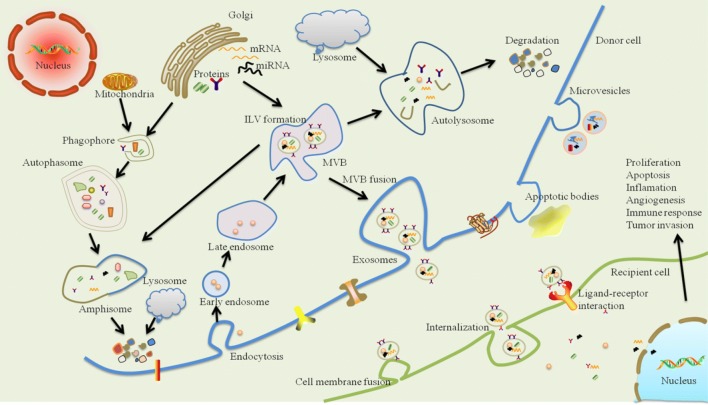Fig. 2.
Schematic representation of exosome biogenesis, release and intercellular communication. Exosomes originate from an endocytic compartment. Early endosome is formed by the inward budding of plasma membrane. During maturation of early endosome, the inward budding of limited areas of the endosomal membrane to form intraluminal vesicles (ILVs) produces multivesicular bodies (MVBs). MVBs faced two fates, where some of them are delivered to lysosomes or autophasome for degradation, while others fuse with the plasma membrane inducing the secretion of exosomes. During the inwarding process of ILVs, many cytoplasmic components are encapsulated, such as proteins, lipids and nucleic materials, which makes them represent a new signaling paradigm to interfere cell-to-cell communication. Moreover, this intercellular signal transmission might be mediated through three pathways, including endocytosis/internalizatioin, direct membrane fusion, or receptor-ligand interaction

